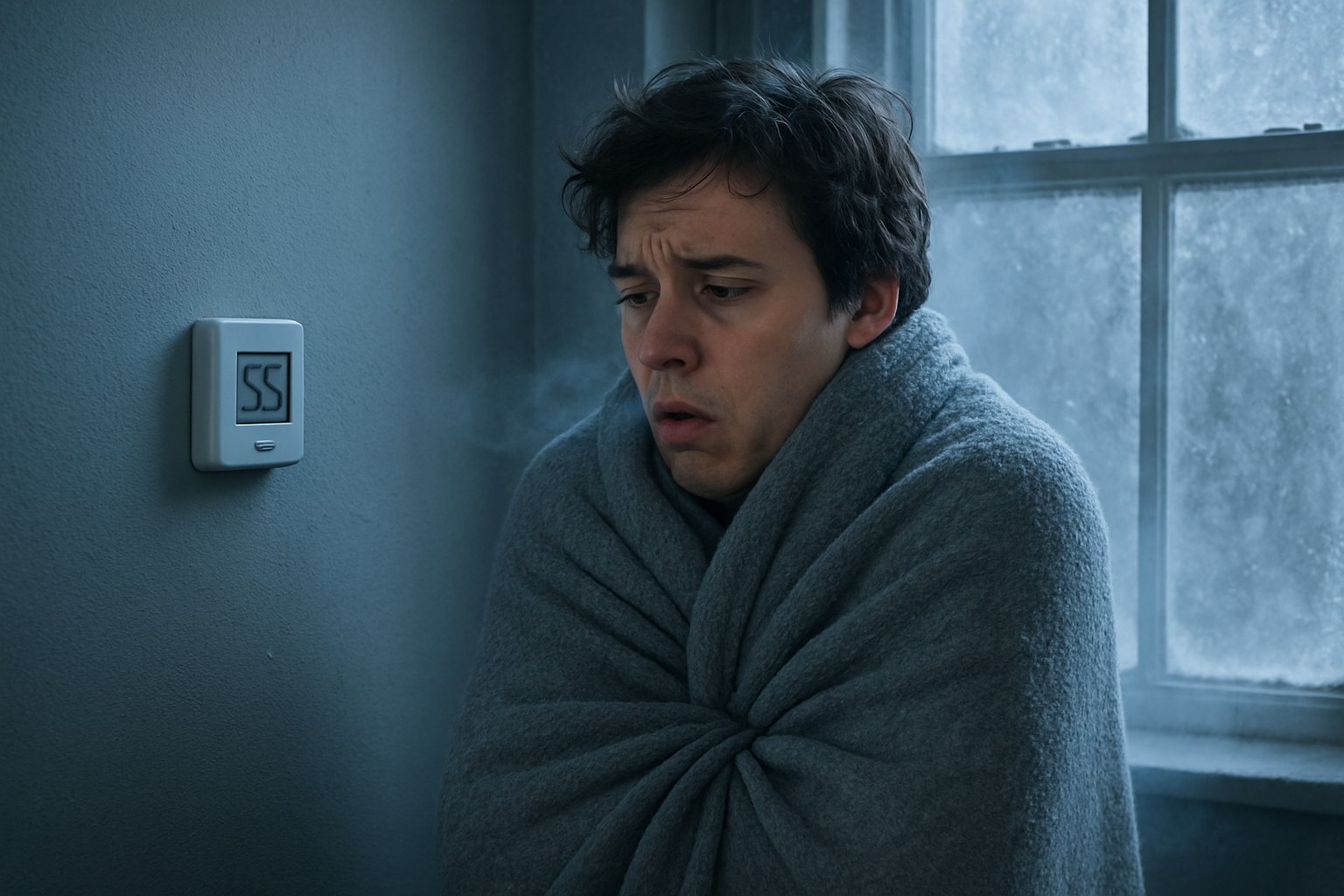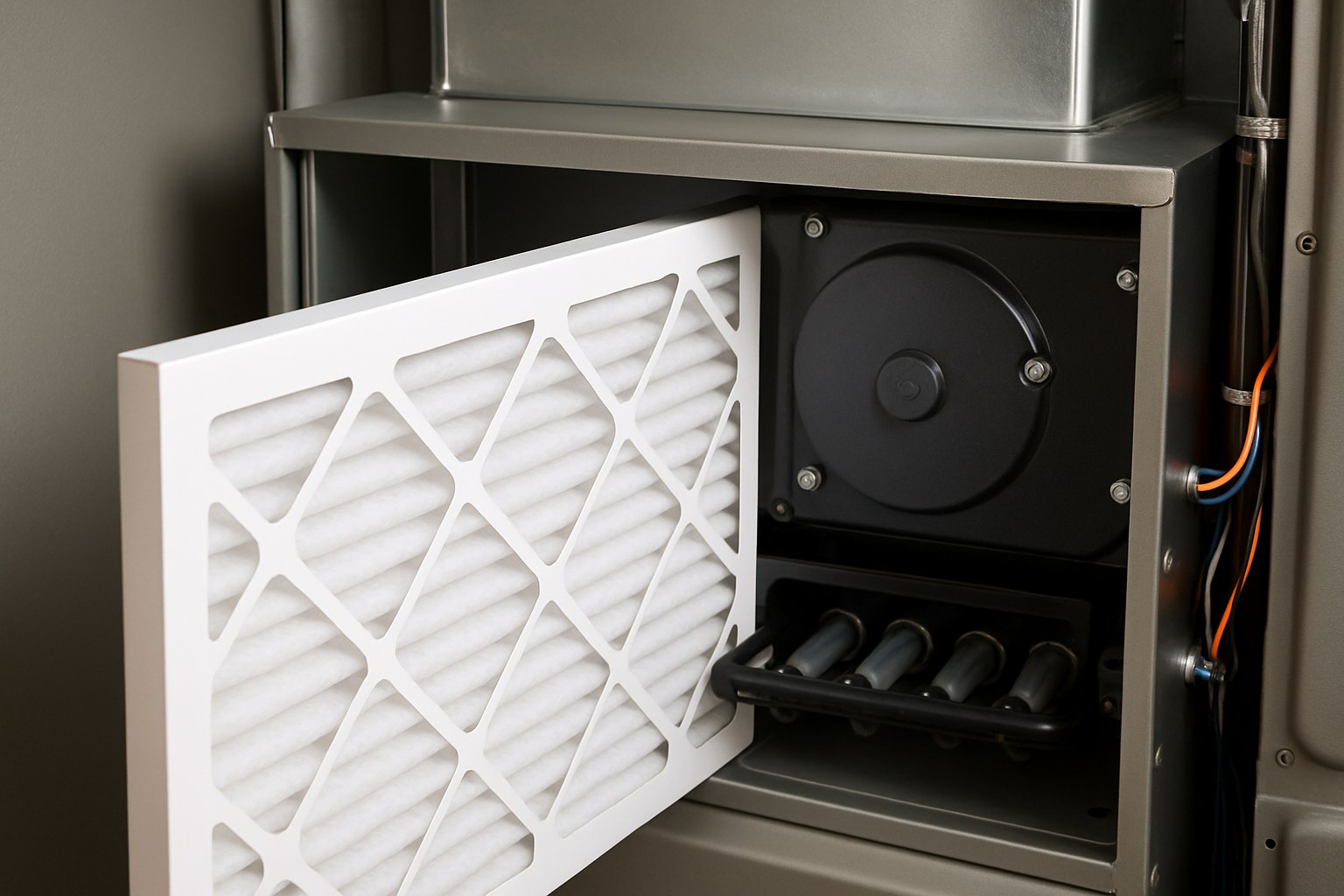Furnace Wont Turn On Heres How to Fix It
There are few things more jarring than waking up on a frigid morning to discover your furnace has decided to take an unscheduled vacation. The silence where the familiar hum of warm air should be is unsettling, and the creeping cold can quickly turn your cozy home into an icebox. Your first instinct might be to panic and call an HVAC professional, but hold that thought. Many common furnace issues are surprisingly easy to fix yourself, and you can often get your heat back on in under an hour with just a little troubleshooting.
This guide is designed to be your friendly expert on the other end of the line. We'll walk you through the most common reasons why your furnace won't turn on, from simple thermostat settings to basic power and ignition checks. Let's get that warmth flowing again!

Why Won't My Furnace Turn On? The Usual Suspects
Before we dive into the step-by-step fixes, let's understand what we're up against. When a furnace fails to start, the problem usually falls into one of three categories:
- Thermostat Issues: The thermostat is the brain of your HVAC system. If it’s not set correctly or has lost power, it won't tell your furnace to turn on.
- Power Problems: Your furnace needs electricity to run, even if it heats with gas or oil. A tripped breaker, a flipped switch, or a loose panel can cut off its power supply.
- Ignition Failure: The furnace needs to create a flame to generate heat. A dirty sensor, an extinguished pilot light, or a faulty igniter can prevent this from happening.
Now, let's roll up our sleeves and work through these possibilities one by one.
Step-by-Step Guide to Fix a Furnace That Won't Turn On
We’ll start with the simplest and most common fixes first. Don't skip a step, as you might solve the problem much faster than you think.
Step 1: Check Your Thermostat Settings
It might sound too simple to be true, but an incorrect thermostat setting is the number one reason furnaces fail to start. Someone might have accidentally changed the settings, or a power flicker could have reset it.
- Check the Display: First, look at the thermostat. Is the display on? If it's completely blank, you may need to replace the batteries. Many digital thermostats use batteries for backup or primary power. Slide the unit off its wall plate to find the battery compartment.
- Confirm the Mode: Make sure the thermostat is set to "HEAT" mode. If it’s on "COOL," "FAN," or "OFF," it will never call for heat.
- Raise the Temperature: The target temperature must be set higher than the current room temperature. To be sure you're giving it a clear signal, raise the set temperature at least 3-5 degrees above the current ambient temperature displayed on the thermostat.
- Listen and Wait: You should hear a faint "click" from the thermostat, which is the signal being sent to the furnace. Now, be patient. Most furnaces have a built-in delay of up to 5 minutes before they kick on. Wait a full five minutes to see if the blower fan starts and you feel warm air.
If the furnace starts, congratulations! You've solved the problem. If nothing happens after 5 minutes, it's time to move on to the power supply.
Step 2: Check the Power Supply
Like any major appliance, your furnace requires a dedicated electrical circuit to operate its fans, controls, and safety features. Here are the three power checkpoints to verify.

- The Circuit Breaker: Go to your home's main electrical panel (often in the basement, garage, or a utility closet). Find the breaker labeled "Furnace," "Heater," "HVAC," or "Air Handler." Is it in the "ON" position? Sometimes a breaker can trip, landing in the middle or "OFF" position. To properly reset it, you must flip it all the way to "OFF" first, then firmly back to "ON."
- The Furnace Power Switch: Most furnaces have a dedicated power switch located on or near the unit itself. It often looks like a standard light switch. This switch is for service and safety, and it's easy to accidentally bump it into the "OFF" position. Make sure this switch is turned "ON."
- The Furnace Door Panel: For safety, furnaces have a push-in switch (a kill switch) that is activated when the blower compartment door or front panel is securely in place. If the panel is loose or ajar, the furnace will not have power. Press firmly on the panel to ensure it's fully seated and you hear the switch engage.
After restoring power at any of these points, go back to your thermostat and make sure it's still calling for heat. Wait another 5 minutes. If it roars to life, you're all set! If not, we need to investigate the furnace itself.
Step 3: Check the Ignition System
This is where the process differs based on whether you have a gas, electric, or oil furnace.
For Gas Furnaces: Ignition Check
Safety First: If you smell gas at any point during this process, stop what you are doing immediately. Do not touch any light switches or electronics. Leave your home, and from a safe distance, call your gas company's emergency line.
Modern gas furnaces use an electronic igniter, while older models may have a standing pilot light.
- Look for Error Codes: Turn off the power to the furnace using the nearby switch. Remove the front panel covering the burner compartment. On the furnace's control board, you should see a small LED light. Turn the power back on and watch this light. It may blink in a specific sequence. Look for a chart on the inside of the furnace panel that explains these blinking codes; this can tell you the exact problem (e.g., "3 blinks = pressure switch fault").
- Observe the Ignition Sequence: With the panel still off (be careful of moving parts!), have someone else raise the thermostat temperature to call for heat. Watch what happens. You should hear a click, see a small igniter element begin to glow bright orange, and then hear the whoosh of the gas burners igniting.
- If You Have a Standing Pilot Light: If you have an older furnace, you may have a small, continuously burning flame called a pilot light. Look through the small sight glass or opening near the gas valve. If this flame is out, the furnace won't light. Follow the specific instructions printed on the furnace label to relight it. This usually involves turning the gas knob to "PILOT," pressing and holding it down while lighting the pilot with a long-nose lighter, and continuing to hold the knob for 30-60 seconds until the thermocouple heats up.
- If You Have an Electronic Igniter: If the igniter doesn't glow, it may have failed and will need to be replaced. If it glows but the burners don't light, the problem could be a dirty flame sensor or a faulty gas valve, which typically requires a professional.
If relighting the pilot or a reset gets the furnace running, you're back in business! If not, it’s time to call for help.
For Electric or Oil Furnaces: Quick Reset
Electric and oil furnaces often have a master reset button.
- Locate the Reset Button: Look for a red or yellow button, usually marked "RESET," on the furnace's control box or near the motor.
- Press it Once: Press this button firmly only one time.
- Wait: Wait a full 5 minutes for the system to attempt a restart.
- Do Not Press it Again: Pressing the reset button multiple times can damage the system or lock out the controls, requiring a professional to override it. The reset button is a safety feature that trips when it detects a problem. If it trips again right away, there is an underlying issue that needs to be addressed by a technician.
When to Throw in the Towel and Call an HVAC Pro
You’ve done a great job troubleshooting, but some problems are best left to a trained professional. It's time to call for help if:
- You've tried all the steps above and the furnace still won't start.
- You smell gas.
- The circuit breaker for the furnace trips repeatedly.
- The furnace makes loud banging, screeching, or grinding noises.
- The furnace's error code indicates an internal fault with the control board, motor, or sensors.
According to HomeAdvisor, the average furnace repair costs between $131 and $480, though a simple service call to diagnose the issue typically runs from $75 to $200. A common repair like replacing a faulty igniter can cost up to $400, while a new blower motor could be over $1,500. By handling the simple fixes yourself, you've already potentially saved yourself a significant service fee.

Final Thoughts: Your Partner in Home Maintenance
Fixing a furnace that won't turn on is often a matter of patient, step-by-step diagnosis. By checking the thermostat, power, and basic ignition components, you can solve the majority of common issues without ever needing to make a service call.
For more expert home maintenance guides, personalized reminders for tasks like changing your furnace filter, and access to a network of vetted professionals for the jobs you can't tackle alone, download the Casa app today. We empower you to manage your home with confidence, keeping it safe, comfortable, and running smoothly all year long.

